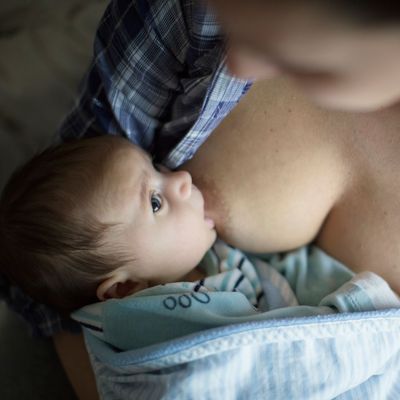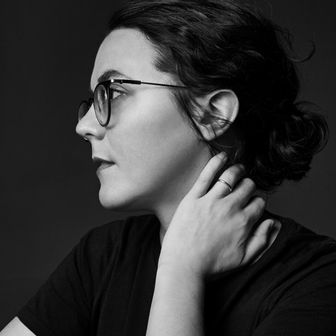
Last week, the internet went haywire over a now-unpublished column about a woman picking up someone else’s baby and wanting to breastfeed him. The woman in question, Canadian writer Leah McLaren, says she did not have permission from the baby’s parents, who were downstairs from the room where the incident took place about 15 years ago, nor was she lactating at the time. Nothing happened, according to the tale: The baby’s father, Canadian politician Michael Chong, walked in just after she’d unbuttoned her shirt and as McLaren was reaching into her bra. Still, the mere idea — a curious woman who thought she might insert her nipple into a baby’s mouth without parental consent — set the internet on fire.
Public judgments of incidents where a woman other than a baby’s mother breastfeeds tend to be black-and-white, and highly dependent on who’s involved. When a day-care worker was caught on tape feeding a baby without parental permission: bad. When a sick mother was too ill to breastfeed and strangers offered: good; likewise with different but adjacent instances of donated breast milk for infants in need. But when a woman writes about considering — just considering — putting someone else’s baby to her breast: bad, bad, bad.
In my own coverage, I called McLaren’s story “strange” and “bizarre,” but I’ve started to wonder: Did the internet become too distracted by the ill-fated column’s flashy anecdote? The controversial story, after all, was meant to illustrate a larger point about “breastfeeding someone else’s baby.” While McLaren wonders a little lazily why wet nurses aren’t more of a “thing,” maybe she has a point about shared nursing among friends.
Legendary midwife Ina May Gaskin would be inclined to say she does. Most famous as a leading figure in the so-called “natural” childbirth movement, Gaskin is pro-breastfeeding and, under certain conditions (like negative HIV tests), pro–shared nursing. Her 2009 Guide to Breastfeeding devotes an entire chapter to the subject, illustrating her position with anecdotes taking place both at the Farm, the intentional community and midwifery practice Gaskin founded in 1971, and far from it. According to Gaskin, shared nursing helps not only babies but lactating women, especially those in the throes of maternal grief. She comes by her position with firsthand experience: After the death of her prematurely born son, Gaskin writes, nursing someone else’s baby “soothed something very deep” inside her. She describes another woman who breastfed her sister’s baby while she worked as a waitress, positing nurse sharing as a way to triumph in breastfeeding despite a lack of employer support, or simply to give a breastfeeding mother more freedom. Of the wet-nursing economy from times past, she notes that “women who were poor or penniless probably had very little choice.”
But some aspects of Gaskin’s nurse-sharing chapter are eerily relevant to McLaren’s column: First, according to Gaskin, it’s not impossible that a woman like the then-20-something and childless McLaren could have lactated. The midwife points to a few historical texts that mention spontaneous lactation, and includes testimony from women who claim to have lactated during periods of closeness with babies who were not their own. Two of these women were examined for brain tumors, as spontaneous lactation can be a symptom of an abnormal growth near the pituitary gland (which was not the case for either woman).
If she were to weigh in on McLaren’s youthful intent, though, Gaskin would come down on the internet’s side. The Farm’s boob-swapping etiquette has been in place since the 1970s and leaves no gray area: “We agreed, for instance, that asking to breastfeed another woman’s baby out of mere curiosity was impolite and intrusive and shouldn’t be done.” Still: When consent is assumed and any health risks accounted for, are nurse-sharing advocates like McLaren and Gaskin onto something?
Nope, say my friends anyway. Fellow first-time mom Amber told me she’s thought about breastfeeding a baby who’s not hers quite a bit. She wouldn’t do it, she thinks, “unless it was like Red Dawn and we were on the run, hiding from the Russians and holed up somewhere and the other baby’s mother died and there was nothing else for it to eat.” Other newish moms I spoke to echoed Amber’s sentiment; the phrase “hungry orphans” was used more than once. Some expressed curiosity purely from a biological standpoint — what would another baby’s mouth feel like, mother of two Amy wondered — but said that wouldn’t be enough for them to actually do it. Unless the circumstances were extreme and the baby’s survival was in question, the conclusion seemed to be, baby swapping at the boob level would be undeniably weird.
I’ll admit I’ve thought about how easy it would be for me, a lactating woman, to soothe a friend’s crying infant — or to have her soothe mine during times I can’t breastfeed or just don’t want to. But even with a little more knowledge, it’s the weirdness that keeps me from proposing nurse sharing as a serious option. Perhaps it takes very specific conditions — living on an isolated farm in Tennessee or a very specific connection between friends — for nurse sharing to join the arsenal of tools mothers use to help other mothers. For now, all the conversations I’m having remain purely theoretical, all our babies matched only with their mother’s breasts.





